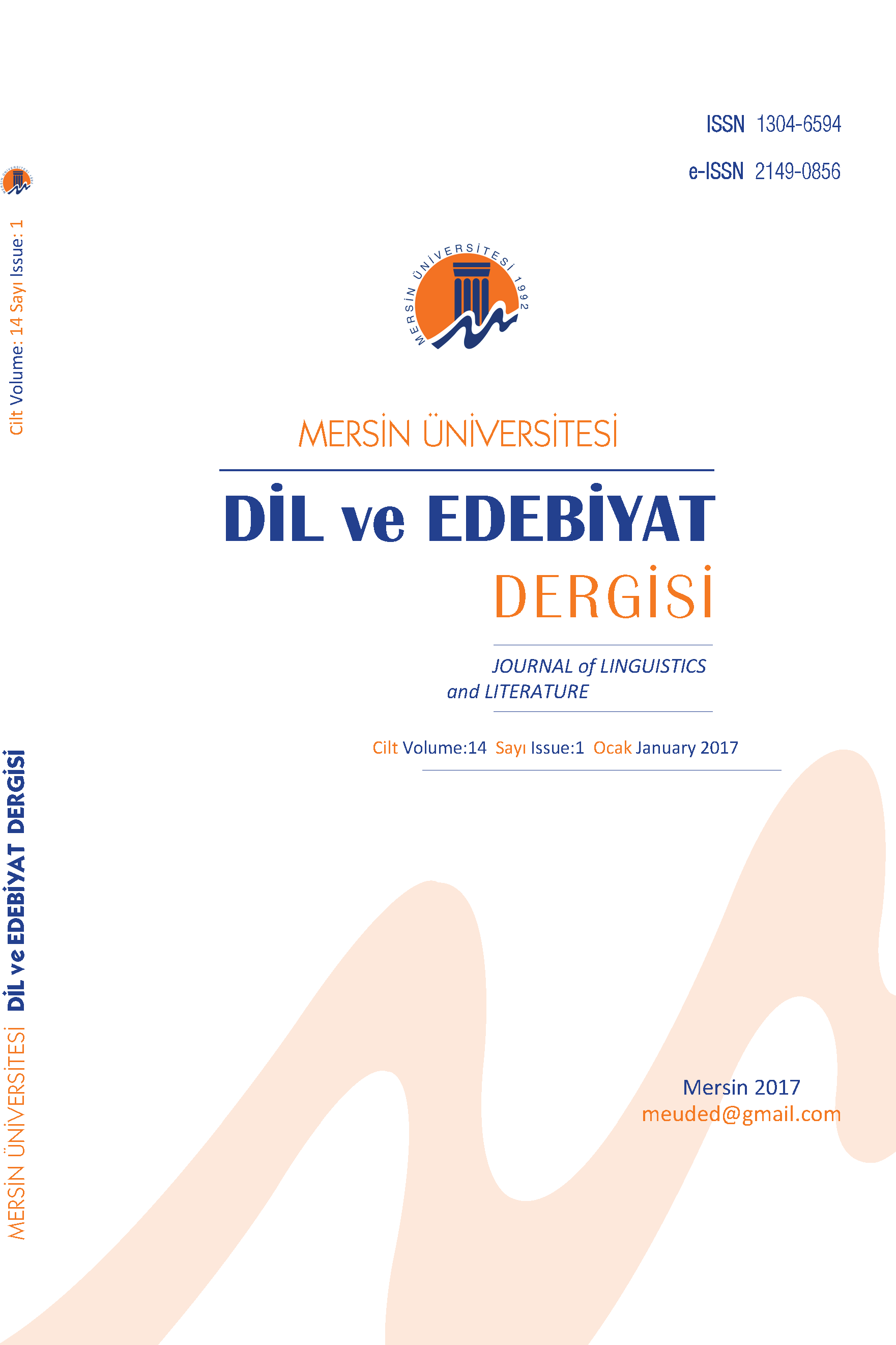(Editorial) Interactional Markers in Turkish: A corpus-based perspective
(Editorial)
Anahtar Kelimeler:
-
-
contributions and function to achieve coherence and which display epistemic and affective stances (Fraser, 1996; Norrick, 2012a; Schiffrin, 1987). These linguistic entities have been variously referred to as ‘discourse markers’, ‘pragmatic markers’, ‘discourse particles’ or pragmatic particles. Amongst these ‘discourse markers/particles’ lean
Keywords:
-,
___
- Acar, M. G. C. & Eryılmaz, K. (2010). Sözlü derlem için web tabanlı yönetim sistemi. 24. Ulusal Dilbilim Kurultayı Bildiri Kitabı. 17-18 Mayıs 2010 (pp. 437-443). Ankara: ODTÜ, Yabancı Diller Eğitimi Bölümü.
- Aijmer, K. (2002). English discourse particles. Evidence from a corpus. Amsterdam: John Benjamins.
- Aijmer, K. & Simon-Vandenbergen, A.-M. (2006). Introduction. In K. Aijmer, A.-M. Simon-Vandenbergen (Eds.), Pragmatic markers in contrast, (pp. 1-10). Amsterdam: Elsevier.
- Brown, P., & Levinson, S. C. (1987). Politeness: Some universals in language usage. Cambridge: Cambridge University Press.
- Büyükkantarcıoğlu, N. (2006). An analysis of Turkish interjections in the context of reactive idea framing. Hacettepe Üniversitesi Edebiyat Fakültesi Dergisi, 23 (1), 19-32.
- Caffi, C., & Janney, R. W. (1994). Towards a pragmatics of emotive communication. Journal of Pragmatics, 22, 325-373.
- Culpeper, J. (2011). Impoliteness: Using language to cause offence. New York: Cambridge University Press.
- Çubukçu, H. (2005). Karşılıklı konuşmada destekleyici geri bildirim. XVIII. Dilbilim Kurultayı Bildirileri. Ankara, 289-304.
- Fraser, B. (1996). Pragmatic markers. Pragmatics, 6, 167-190.
- Norrick, N. R. (2012a). Interjections. In: G. Anderson & K. Aijmer (Eds.), Pragmatics of society. Handbooks of pragmatics, Vol. 5 (pp. 243-291). Berlin/Boston: De Gruyter Mouton.
- Norrick, N. R. (2012b). Listening practices in English conversation: The responses responses elicit. Journal of Pragmatics, 44, 566-576.
- Özbek, N. (2000). Yani, işte, şey, ya: Interactional markers of Turkish. In A. Göksel & Kerslake, C. (Eds.), Proceedings of the 9th International Conference on Turkish Linguistics (pp. 393-401). Wiesbaden, Harrosowitz.
- Rehbein, J. Schmidt, T. Meyer, B., Watzke, F. & Herkenrath, A. (2004). Handbuch für das computergestützte Transkribieren nach HIAT. In: Arbeiten zur Mehrsprachigkeit, Folge B 561.
- Roulet, E. (1980). Interactional markers in dialogue. Applied Linguistics, 1(3), 224-233.
- Ruhi, Ş. (2011, July). ‘LOOK’ as an expression of procedural meaning in directives in Turkish: Evidence from the Spoken Turkish Corpus. Paper presented at the 6th International Symposium on Politeness, 11-13 July 2011, METU, Ankara.
- Ruhi, Ş., Hatipoğlu, Ç., Eröz-Tuğa, B. & Işık-Güler, H. (2010b). A guideline for transcribing conversations for the construction of spoken Turkish corpora using EXMARaLDA and HIAT. ODTÜ-STD: Setmer Basımevi.
- Schiffrin, D. (1987). Discourse markers. Cambridge: Cambridge University Press.
- Schmidt, T. & Wörner, K. (2009). EXMARALDA – creating, analysing and sharing spoken language corpora for pragmatic research. Pragmatics, 19, 565-582.
- Spoken Turkish Corpus http://stc.org.tr/
- Yılmaz, E. (2004). A pragmatic analysis of Turkish discourse particles: Yani, işte and şey (Unpublished doctoral dissertation). METU, Ankara.
- ISSN: 1304-6594
- Yayın Aralığı: Yılda 2 Sayı
- Başlangıç: 2004
- Yayıncı: Mersin Üniversitesi
Sayıdaki Diğer Makaleler
The Interactional Functions of tamam in Spoken Turkish
Laughter as a Face Management Device in Turkish: Evidence from Turkish Spoken Corpus
(Editorial) Interactional Markers in Turkish: A corpus-based perspective
Interactional Functions of şey in Turkish: Evidence from Spoken Turkish Corpus
How do we say NO in Turkish?: A corpus-based analysis of hayır and cık in Turkish
